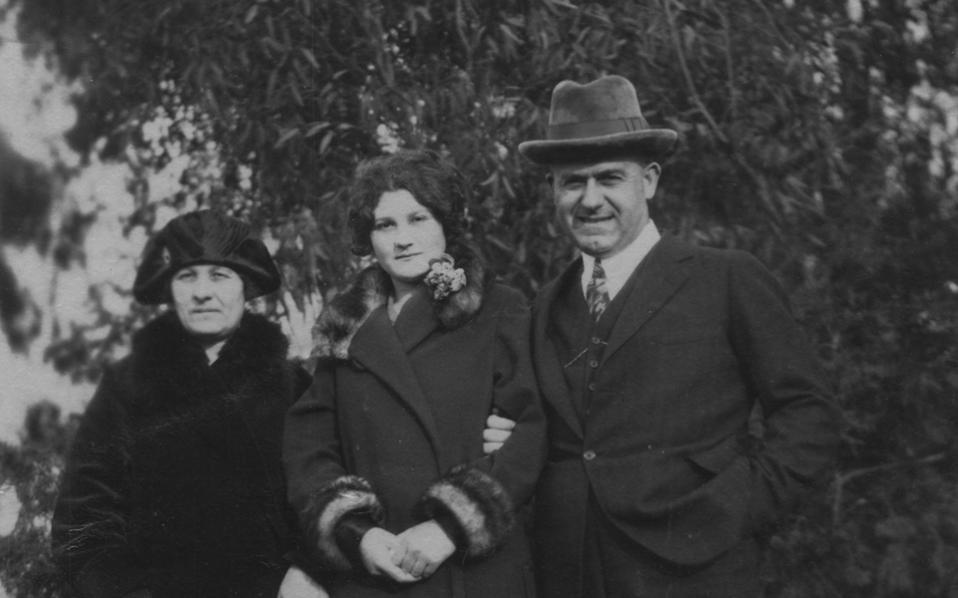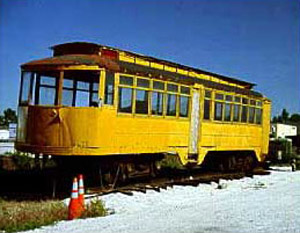The 1920s were a very tumultuous time for any streetcar service in America, and Denver was no different as the city entered the new decade with blood on the street tracks. An irate public had turned against the streetcar it had loved so dearly because of terrible business decisions that ended up valuing profits over people, and the rise of the automobile meant that a monopoly on public transit was no longer economically viable. What does a transit company do when an angry mob gathers outside, wanting to hear them out or die deaf? Find out on today's Trolley Thursday, covering the end of the Denver Tramway.
-----
 |
The Denver Tramway Strike hits Colfax Avenue, 1920
(Colfax History) |
 |
Mayor Dewey C. Bailey, rocking the
handlebar moustache
(Denver Library) |
In 1918, Denver Tramway was sued by the City of Denver for reneging on their 1906 charter promising to keep their 5-cent fare, despite the ridership dwindling and leaving the company's operating costs in the red. In response to a newly-elected Dewey C. Bailey promising to restore the 5-cent fare, Denver Tramway announced mass layoffs and paycuts to whoever was left. This incensed Denver residents further that by July, 1918, the Local 746 of the Amalgamated Association of Street and Electric Railway Employees of America was organized.
Due to the organization falling under wartime (World War I), the Local 746 was able to bring War Labor Board regulations to the table and demand their implementation, which included an eight-hour workday and a wage raise. Denver Tramway, ever the corporate rebel, instead cut the remaining workers' pay even more because of the City's position to deny any fare increases. The next year, July 1919, a general strike occurred over four days but failed to make an impression on the Denver Transit.
By the next year, though the Treaty of Versailles would be passed to end World War I, Denver on the other hand was itching for a war. Denver Tramway again put out a general threat to cut wages further (to the point of just... not paying people?) unless the City of Denver at least acquiesced to a fare increase. The people refused to budge and instead voted to strike by August 1 if Denver Transit didn't back down. The company quickly hired legendary California strikebreaker John "Black Jack" Jerome and his crew as a response.
 |
John "Black Jack" Jerome, at right.
(Ekathimerini) |
August 1st came and went, and by August 3rd, Jerome and crew had arrived in Denver, armed to the teeth. By then, all cars had ground to a halt and left the city in a standstill, and none of Jerome's crew were "scab" motormen or conductors, instead being college students, guards, detectives, and reformed criminals. Though Mayor Bailey was on the side of the people, he also took a precaution to arm the strikebreakers as city deputies. On August 4, Jerome himself took to the controls to defy the strikers, piloting a car out of the barn at Fourteenth and Arapahoe. The car was later rolled over by a mob, leading Jerome and crew to clash with union strikers.
 |
Two or three Denver Tramway cars rolled over by the mob.
(Colfax History) |
August 5th was the worst day for the strike, starting in the afternoon with a parade of demonstrators chased two "scab" streetcars heading back to the barn. The chase led to several organized mobs that began targeting not only Jerome and his crew, but also the headquarters of Denver Tramway, the anti-union Denver Post, and the Union Station. Two bystanders were killed that night and 33 were injured. At 1 AM, August 6, Mayor Bailey found the city's police overwhelmed and immediately called for a citizen's volunteer militia to take over that night, leading to five deaths and 25 wounded at the East Division carbarn.
When the smoke had cleared, Mayor Bailey and Colorado Governor Oliver Shroup appealed for federal assistance, leading to martial law being declared under Col. C.C. Ballou from nearby Fort Logan. His superior, Maj. Gen. Leonard Wood, would later state that arming Jerome's strikebreakers was a "colossal blunder". Denver Tramway would file bankruptcy shortly after due to the losses in infrastructure, equipment, and manpower, while the Local 746 was also dissolved.
 |
A Denver Tramway coach passes City Hall, shortly before
mass de-electrification, early 1950s
(RTD Archives) |
When the company emerged from bankruptcy, Denver Tramway posted its first trolleybus route from Englewood and Fort Logan in 1924. Despite buying new home-built trolley cars from Woeber Auto Body and Manufacturing that same year, the buses were cheap, flexible, and gave Denver Tramway a loophole to not maintain the roads anymore since they were leaving the trolley business. 1949's roster lists showed 131 streetcars, 138 trolley coaches, and 161 buses under the Tramway, but by next year all streetcars would be removed from service and all infrastructure removed by 1955. Old trolley bodies were offered to sell at $100 a car (almost $1000 in 2019).
From then until the company's incorporation into the Colorado Regional Transportation District (RTD) in 1971, the Denver Tramway remained an increasingly irrelevant monopoly. The rise in car ownership and lack of public say in operations meant many Denverites chose to commute by car, and Denver Tramway soon transferred its assets to the municipal Denver Metro Transit (which was very choosy about which neighborhoods would grant it a subsidy to operate in their area). The RTD would be created in 1974 following Metro Transit's near-bankruptcy, ending the Tramway for good. Today, the only piece of surviving Denver Tramway equipment is Car No. 4, which is under restoration by the City of Arvada and the Arvada Historical Society. Car No. 4 is also the last Denver Tramway streetcar to run in 1950, and requires urgent and intense restoration as it was placed on the "Endangered Places" list by Colorado Preservation in 2015.
 |
A Timken ad from 1950 proclaiming the glories of the new buses,
contrasting with the electrified horsecars from the 1880s.
(Transpress NZ) |
 |
Denver Tramway No. 4, undergoing badly-needed restoration.
(HistoryColorado.org) |
-----
Well, that was pleasant! I think. I assure everyone next week will be much happier, as we'll look at the interurban side of Denver Tramway's operations with the Denver & Interurban Railway, and also zoom our camera in and nerd out on the different cars operated by both systems. In the meantime, please give
myself and
my editor a follow on twitter to get alerted when the newest episode comes out, and
buy a shirt to look good when trolley-distancing. Until next week, ride safe!








No comments:
Post a Comment